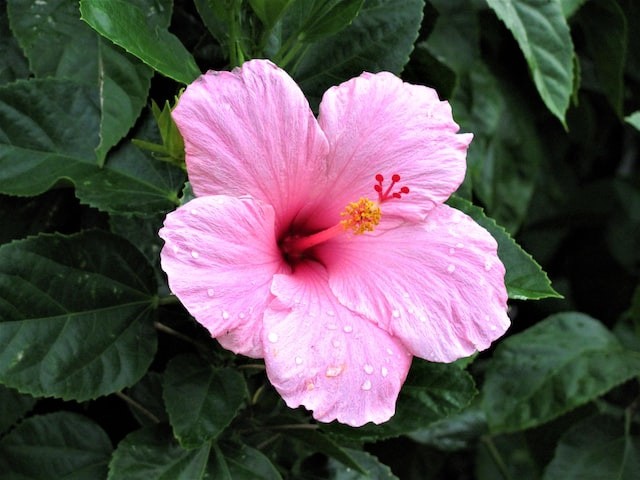Researchers from the University of Hawai'i at Mānoa College of Tropical Agriculture and Human Resources have discovered two new viruses that are attacking hibiscus plants in Hawaii and may endanger the state flower.
Hibiscus bushes in Hawaii being infected by new viruses

Hibiscus soymovirus and betacarmovirus are the names of the two viruses. On the leaves of infected hibiscus plants, you can see mosaic, ringspot, and chlorotic marks, as per Phys.org
A total of 54 hibiscus samples were gathered in Honolulu, with 20 samples coming from various areas from Diamond Head to downtown, with 34 samples coming from 18 different locations on the UH Mānoa campus.
One or more of the viruses was present in 12 out of the 54 samples, or 22% of the total. Hibiscus betacarmovirus was detected in one sample, hibiscus soymovirus was detected in nine samples, and both viruses were detected in two samples.
The same team of CTAHR researchers previously identified two related viruses affecting hibiscus plants in Hawaii by the names hibiscus latent Fort Pierce virus and hibiscus latent Hawaii virus.
Hu and Michael Melzer, an associate researcher in the Department of Plant and Environmental Protection Sciences at UH Mānoa, are the team's leaders. For further a decade, Hu and Melzer have been studying hibiscus viruses.
How viruses infect plants
The majority of plant viruses are spread by insect vectors that harm the plant and make a way for infections to enter, or that feed by tapping into the phloem, as per TheScientist
Once inside, viruses control the machinery of the plant cells using the few genes in their little genomes while dodging the plant's defenses. The infection mechanism for RNA viruses, the most prevalent kind of plant virus, is generalized here.
Also Read: Plant Virus Responsible For Wiping Out African Food Staple Cassava Continues To Spread
Symptoms of Hibiscus Chlorotic Ringspot Virus
In naturally infected Hibiscus rosa-sinensis, HCRSV causes a wide range of symptoms that vary according to the cultivar's tolerance and the surrounding environment, while infection length and perhaps viral isolate virulence may also have an impact on symptom severity, as per PlantwisePlus.
HCRSV causes leaf chlorosis in some cultivars, but in the majority it causes leaf mottling and/or chlorotic rings.
Particularly when the average ambient temperature is high, as it is during the summer in Florida, some cultivars don't show any obvious signs.
The leaves of infected Abelmoschus manihot plants typically show chlorosis, which is more obvious when HCRSV co-occurs with other viruses. Flowers show no symptoms.
Damage control for HCSV
It is necessary to create, reproduce, and disperse virus-tested stocks of both natural hosts since HCRSV spreads by infected propagules
The use of meristem tip culture, thermotherapy, and/or chemotherapy to create virus-tested stocks of the most suitable cultivars of both natural host species has not yet been explored. Abelmoschus manihot and Hibiscus rosa-sinensis are not seed-transmitted by the virus.
Therefore, it is reasonably simple to get healthy seedlings, where it may also be possible to choose good stock plants for continued propagation.
Reasonable methods for avoiding or decreasing local HCRSV spread depend on more knowledge about the virus's natural mechanism of transmission. HCRSV's impacts on the development and productivity of its natural hosts have not yet been determined.
Though virus-induced chlorosis in Abelmoschus manihot plants implies that they are also negatively impacted by infection, the growth of inoculated Hibiscus rosa-sinensis seedlings is considerably reduced.
© 2025 NatureWorldNews.com All rights reserved. Do not reproduce without permission.





